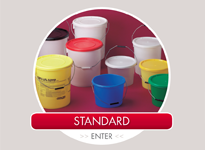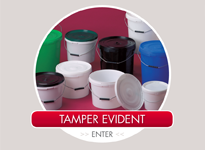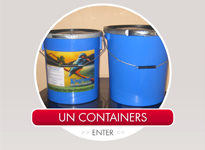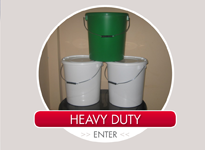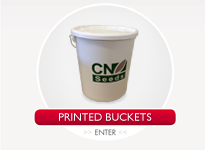

What constitutes ‘Food Grade’ plastic?
June 18, 2013 at 2:40 PM
If you’ve had a fairly broad skim through the blog postings on the H&O site, you’ll have discovered some of the many multifarious uses of plastic buckets and pails. From bait buckets for fishing to drums for street musicians, the uses for the humble plastic bucket are ingenious as they are ubiquitous.
Our journeys into the esoteric uses of plastic buckets have, in fact, become so nuanced that it may be prescient, at this juncture, to backtrack a little… to get back to bucket basics. The key uses for the bucket, or indeed plastic containers in general, are essentially two fold: storage of goods, and the transportation of those goods. Of course the contents might be anything from chemicals to building materials, cement to soil, and in most of those cases, any plastic bucket will do the job – it’s really down to the size required, how sturdy and secure it needs to be, and whether it needs a lid, or a handle. However, there are some cases where a bucket is required for a more specific job… and then you will require a more specialist product.
The main instance is food - both food storage (for instance in the fridges or cupboards of commercial food premises) and food preparation (the stirring or mixing that might take place in either a commercial or domestic setting). Here in the UK there is quite rightly legislation that dictates what kinds of plastic can come into contact with food, and these fit into the policies of food standards agencies across the planet. Various food scandals, allied with our own developing understanding of food hygiene, dictates that it’s common sense to think seriously about food storage.
Of course it’s unlikely anyone is about to mix up a spag bol in a bucket previously used for storing bleach. However, beyond such common sense, legislation also dictates that any plastics used for food packaging need to be much purer than that which might be used for storing non-perishable goods. This level of plastic is known as “food grade”, so that consumers can feel immediately assured they can store food in such containers, straight away.
High spec, polypropylene food grade containers
Food grade containers are manufactured to very strict standards. Firstly, no recycled plastic can be used, as the origins of such plastic cannot be assured. Secondly, there must be no dyes within the plastic, which might leach into the contents within, thereby contaminating the food. Some new plastic undoubtedly have that “new plastic” smell, and we don’t want that to infuse our foodstuffs, so it important that buckets are made from such high quality material that might prevent such leaching, especially when used for highly acidic, or fatty foodstuffs. Or, indeed, alcohol. Many people use plastic buckets for homebrewing beer and, of course, the same rules apply, in terms of using food grade plastic to prevent contamination between liquid and container. The rule of thumb is really very simple. Firstly consider what you need the bucket for. If it is food, then make sure you use a food grade container… and if you want to continue to use it for food, make sure you never use it for anything else, otherwise it will no longer be food grade.
At H&O, we manufacture our food grade containers from high specification, high impact polypropylene, which comes within the food grade remit. For further protection, why not consider tamper evident containers? As well as leak proof, this adds the further security level security of seals, which you need to break to gain access to the food within. You can even colour co-ordinate against contents such as milk, coffee and peas, as amongst other colours these containers come in white, black and green!
Add Pingback

